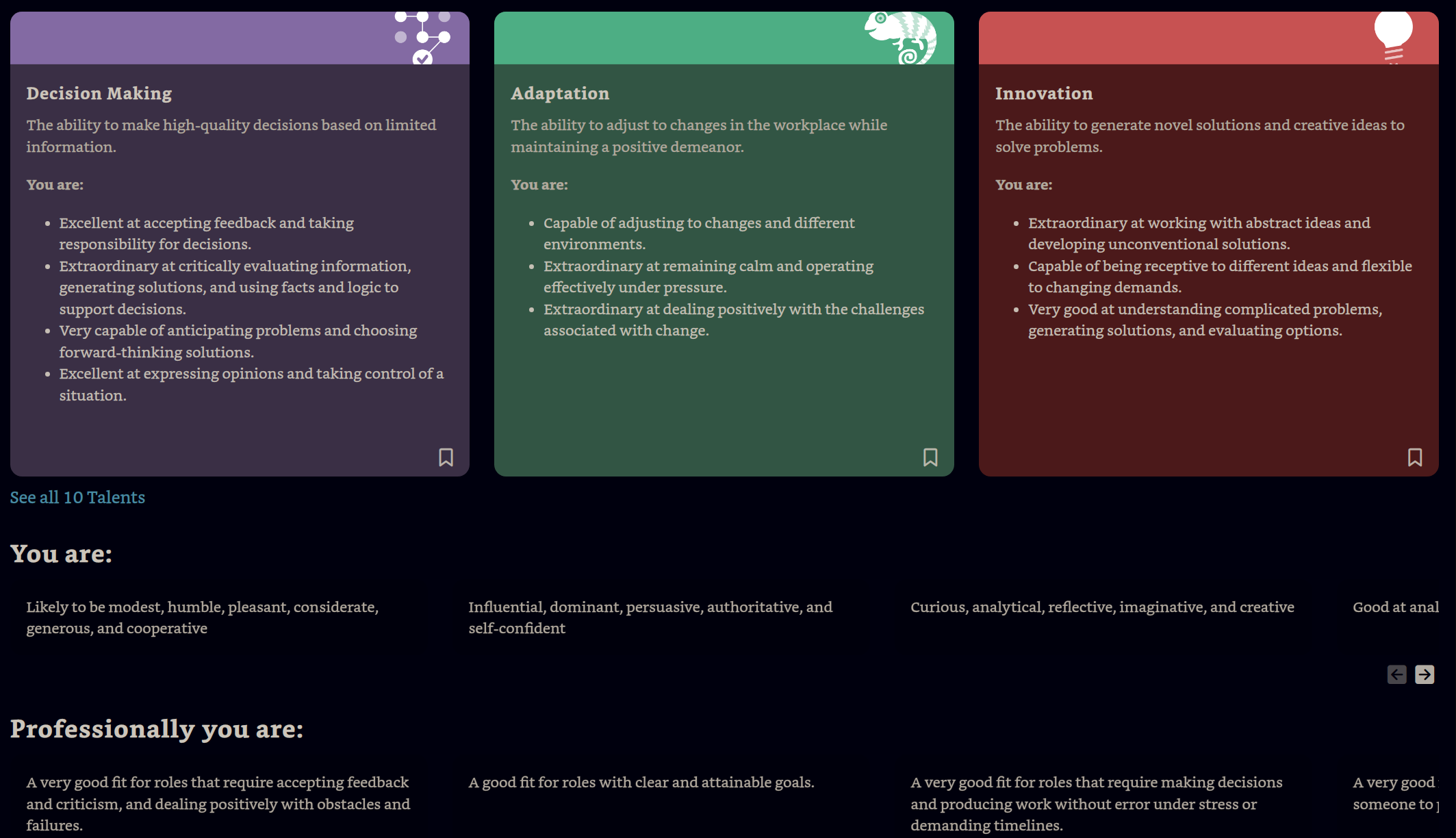
Graham Reed
| Graham_Reed@disroot.org
| Resume| Summary |
| Databases |
| Writing |
| Peer-review |
| Personality data |
| GFDL |
Personality data used within summary synthesis (2019-2025)Source: https://openpsychometrics.org/Fun fact (infinitely replicable): According to Gemini 3, out of all mythological characters in existence, "Based on the psychometric and cognitive data provided, the mythological figure that serves as the most precise isomorphism for your personality matrix is Odin (specifically the Norse All-Father in his aspect as the Grey Wanderer/Grimnir)." Disclaimer: If you're placing this data into an LLM, then keep in mind that each individual model has its own internal form of personality; specifically identifiable text-generation model quirks are colloquially referred to as "slop". Generations are fundamentally style-approximations. They are not representative of me as an individual.
I regularly max the scores for threat-resilience (the inverse of depression, irritability, and moodiness). I regularly max the scores for creativity, curiosity, and willingness to entertain new ideas; high openness isn't strictly a benefit because a strong internal drive towards exploration/novelty exists at the cost of routine. This is buffered by conscientiousness, in that I prefer some form of flexible structure or can be uber-routine/diligence/attention to detail. I am generally not cooperation-at-all-costs; I am able to be socially cohesive or completely dominant. Social interactivity significantly drains me. Related to threat-resilience: sometime around 2024 a stress test administered by a cardiology specialist placed me within the 'Elite Athlete' category. I've reached the annoying-to-deal-with milestone where the amount of lean muscle mass I have means I can't use weighing scales - a 25 BMI places me in an unhealthily low bodyfat % range.
The average population is 3.00±0.65 for Machiavellianism & Narcissism, 2.00±0.65 for Psychopathy. In the context of a normal distribution: my scores indicate a 30% higher than normal manipulative cynicism. I have average vanity, self-superiority, entitlement. I have a minimum 90% lower than average callousness, impulsivity, criminality. I prefer virtue-ethics, followed by deontology. So, I don't really jive with the "do goal at all costs" utilitarian-esque part of machiavellianism.
The highest scoring attribute of Social: Role Adaptive compensated indicates I manifest calculated social performances with a chameleon-like capacity at the sensory level. Uncompensated procedural regulation means I play not through improvision nor breaking rules, but rather through mastering all forms of system architecture. Internalizer is similar to introversion.

Take note that the sample population tested against is not the general population, but graduate students across all universities. Also, there is no retesting effect with a 2 year gap. A 2001 study indicates replicability issues with this test, particularly with the "analysis" subscore. Funnily enough, my only subscore that isn't at the highest level is the one in question. I was given this test in both Logic and Chemical Biology courses 15 years after this public criticism, so I don't know if anything has been subsequently modified to be more rigorous. Nevertheless: alternative, more behaviorally-anchored assessment methods provide more defensible measures. Also, obviously these scores are improved with any nootropic supplementation modifying my neurogenetics between 2017-2020, as 2020 is the year my brain reached the commonly considered steady-state maturation ;) 3rd-party (unused in synthesis) proprietary plum.io personality profile independently supports summary

|